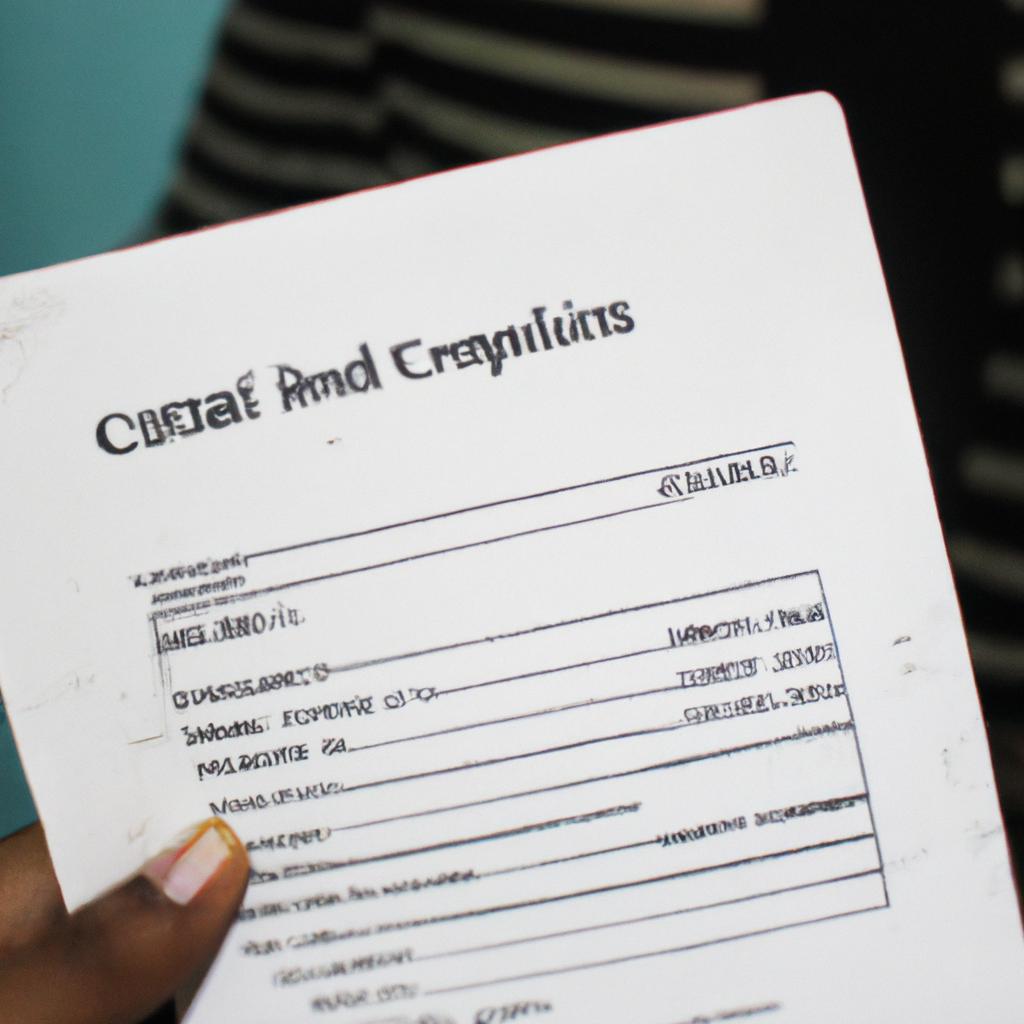In the world of finance, bond yield plays a crucial role in determining the attractiveness and profitability of investments. This is particularly true in industries such as aerospace and defense, where security loans are commonly utilized to secure funding for various projects and initiatives. By understanding the concept of bond yield and its impact on these sectors, investors can make informed decisions that maximize their returns while minimizing risk.
To illustrate this point, let us consider a hypothetical case study involving a major aerospace company seeking financing for a groundbreaking research project. The company plans to develop advanced military aircraft technology that promises enhanced performance capabilities and increased efficiency. In order to obtain the necessary funds, they decide to issue bonds backed by the anticipated revenue from future sales of this technology. However, potential lenders will carefully assess the bond yield associated with these securities before committing their capital.
Bond yield refers to the rate of return an investor can expect to receive from holding a particular bond until maturity. It is influenced by several factors including prevailing interest rates in the market, creditworthiness of the issuer, and perceived level of risk associated with the investment. Understanding how these factors interact within the unique context of aerospace and defense industries allows investors to evaluate the feasibility of security loans in relation to other available investment opportunities. In this article, In this article, we will explore how bond yield impacts the attractiveness and profitability of investments in aerospace and defense industries. By analyzing prevailing interest rates, creditworthiness of issuers, and perceived risk levels, investors can assess the potential returns and risks associated with investing in securities backed by aerospace and defense projects.
One crucial factor that influences bond yield is prevailing interest rates in the market. When interest rates are low, bond yields tend to be lower as well. This is because investors are willing to accept a lower return on their investment due to limited alternative options for generating income. Conversely, when interest rates rise, bond yields also increase as investors demand higher returns to compensate for the opportunity cost of investing in bonds rather than other assets.
The creditworthiness of the issuer is another essential consideration when evaluating bond yield. In the case study mentioned earlier, if the aerospace company has a strong track record of successful projects and financial stability, lenders may perceive it as less risky and offer lower yields on its bonds. On the other hand, if the company has a history of financial difficulties or faces uncertainties related to government contracts or regulatory changes, lenders may demand higher yields to compensate for increased risk.
Perceived risk levels associated with aerospace and defense investments also impact bond yield. Investors often consider factors such as geopolitical tensions, defense spending trends, technological advancements, and competitive landscape when assessing risk. If an aerospace project is deemed high-risk due to factors like uncertain government funding or intense competition from other companies, lenders may require higher yields to offset potential losses.
By considering these factors collectively, investors can evaluate whether investing in aerospace and defense bonds offers an attractive risk-adjusted return compared to alternative investment opportunities. A thorough analysis of prevailing interest rates, issuer creditworthiness, and perceived risk levels enables investors to make informed decisions that align with their investment objectives.
In conclusion, understanding bond yield is crucial for evaluating investments in aerospace and defense industries. By carefully assessing prevailing interest rates, issuer creditworthiness, and perceived risk levels, investors can determine the attractiveness and profitability of investing in securities backed by aerospace and defense projects. This knowledge empowers investors to make informed decisions that maximize their returns while minimizing risk in these industries.
Understanding Bond Yield
When considering investments in the aerospace and defense industry, understanding bond yield is crucial. Bond yield refers to the return an investor can expect from holding a bond until it matures. In this section, we will delve into the concept of bond yield, exploring its significance and factors that affect it.
Significance of Bond Yield:
To illustrate the importance of bond yield, let us take the example of Company X, a leading aerospace manufacturer. Company X issues bonds as a means to raise capital for research and development projects. Investors who purchase these bonds essentially lend money to Company X with the expectation of receiving regular interest payments over time. The bond yield determines whether this investment is attractive or not.
- Higher bond yields indicate higher returns on investment.
- Lower bond yields suggest lower returns but may offer greater stability.
- Fluctuations in market conditions impact bond yields.
- Credit ratings influence bond yields.
Table: Factors Affecting Bond Yield
| Factor | Explanation | Impact |
|---|---|---|
| Economic Conditions | Strong economic growth generally leads to higher yields | Increased demand for funds may push up borrowing costs |
| Interest Rates | Rising interest rates tend to increase bond yields | Fixed-rate bonds become less attractive compared to new issuances |
| Credit Ratings | Bonds with low credit ratings have higher yields | Higher risk associated with default increases required return |
As evident from our discussion on understanding bond yield, several factors come into play when evaluating investment opportunities in aerospace and defense companies. In the following section, we will explore these factors further and shed light on their implications.
[Next Section: Factors Affecting Bond Yield in Aerospace and Defense]Factors Affecting Bond Yield in Aerospace and Defense
Bond Yield in Aerospace and Defense: Security Loans
Understanding Bond Yield
In the previous section, we explored the concept of bond yield and its significance in financial markets. Now, let us delve into the factors that specifically affect bond yield within the aerospace and defense industry. To illustrate these factors, consider a hypothetical case study involving a major aerospace company seeking to issue bonds to finance the development of advanced military technology.
- Government Contracts: The level of government contracts secured by an aerospace or defense company can significantly impact its bond yield. Companies with substantial long-term contracts from reliable government entities are seen as having stable cash flows, reducing their risk profile and thereby lowering bond yields.
- Technological Innovations: In an industry driven by advancements, companies investing heavily in research and development (R&D) tend to experience higher bond yields due to increased risks associated with unproven technologies. Conversely, organizations successfully commercializing cutting-edge innovations may benefit from reduced borrowing costs as investors perceive potential for future revenue growth.
- Geopolitical Environment: Political instability or conflicts affecting regions where aerospace and defense operations are concentrated can raise concerns among investors about project delays or cancellations. Consequently, such geopolitical uncertainties often lead to higher bond yields for companies operating in those areas.
- Competitive Landscape: Intense competition within the aerospace and defense sector also influences bond yields. Fierce rivalry can exert downward pressure on prices, resulting in thinner profit margins for companies involved. As a result, investors might demand higher returns through elevated bond yields to compensate for perceived risks associated with intense competition.
Emotional Response:
Consider how these fluctuating factors intertwine to shape not only corporate strategies but also investment decisions made by individuals across various industries:
- Investors seek stable opportunities offered by government contract-backed entities.
- Technological enthusiasts eagerly support companies at the forefront of innovation while accepting higher risks.
- Concerned citizens weigh the impact of geopolitical instability on their investments.
- Market participants evaluate profitability amidst a fiercely competitive backdrop.
| Factors Affecting Bond Yield | Example Scenario |
|---|---|
| Government Contracts | Company X secures a $1 billion contract with the Department of Defense, leading to reduced bond yield. |
| Technological Innovations | Company Y invests heavily in R&D for advanced unmanned aerial vehicles, resulting in a higher bond yield due to increased risk. |
| Geopolitical Environment | Political unrest in Country Z raises concerns about project delays and cancellations, leading to elevated bond yields for companies operating there. |
| Competitive Landscape | Intense rivalry drives down prices and profit margins for competitors, causing investors to demand higher returns through elevated bond yields. |
Importance of Credit Rating in Bond Yield
Moving forward, it is crucial to examine the pivotal role that credit ratings play in determining bond yield within the aerospace and defense industry. By assessing an issuer’s creditworthiness, credit rating agencies provide valuable insights into an organization’s ability to meet its debt obligations. This analysis enables investors to make informed decisions based on relative risks associated with different issuers’ bonds.
Importance of Credit Rating in Bond Yield
Bond Yield in Aerospace and Defense: Security Loans
Factors Affecting Bond Yield in Aerospace and Defense explored the various elements that influence bond yield in this sector. Now, let us delve into the importance of credit rating as a determinant of bond yield. To illustrate this concept, consider the case study of Company XYZ, a prominent aerospace and defense manufacturer.
Company XYZ’s credit rating is upgraded from BBB to AA by a reputable credit rating agency due to its strong financial performance and stable outlook. This improvement reflects the market’s perception of lower default risk associated with bonds issued by the company. As a result, the bond yield on Company XYZ’s securities decreases significantly, attracting more investors seeking higher returns than those offered by government or investment-grade corporate bonds.
The impact of credit ratings on bond yields can be further understood through four key points:
- Higher credit ratings lead to reduced bond yields: Investors perceive issuers with better credit ratings as less likely to default on their obligations. Consequently, these companies can issue bonds at lower interest rates, thereby reducing overall bond yields.
- Credit ratings affect investor demand for bonds: Bonds with higher credit ratings are often regarded as safer investments compared to those with lower ratings. This increased perceived safety attracts more investors, driving up demand for high-rated bonds and pushing down their yields.
- Lower bond yields enhance company financing capabilities: When companies have higher credit ratings and lower bond yields, they can access capital markets more easily and cost-effectively. This allows them to raise funds for expansion projects or research initiatives crucial for innovation within the aerospace and defense industry.
- Credit spreads reflect relative risk perceptions: The difference between the yield on a corporate bond (such as those issued by an aerospace or defense company) and a benchmark government security is known as the credit spread. A wider spread indicates higher perceived risk associated with investing in that particular company’s bonds.
To provide a visual representation of how credit ratings impact bond yields, we present the following table:
| Credit Rating | Bond Yield (%) |
|---|---|
| AAA | 2.5% |
| AA | 3.0% |
| A | 4.0% |
| BBB | 5.0% |
In conclusion, credit ratings play a crucial role in determining bond yield within the aerospace and defense sector. Higher credit ratings lead to lower bond yields, attracting more investors and enhancing companies’ financing capabilities. The next section will delve into another significant factor affecting bond yield: implications of interest rates.
Transitioning smoothly into the subsequent section on “Implications of Interest Rates on Bond Yield,” let us now explore how changes in interest rates can influence bond prices and yields within the aerospace and defense industry.
Implications of Interest Rates on Bond Yield
Having established the significance of credit ratings in determining bond yield, we now turn our attention to another key factor that affects bond yields in the aerospace and defense industry – interest rates. The relationship between interest rates and bond yield is a crucial one, as fluctuations in interest rates can significantly impact investors’ returns. To illustrate this point, let us consider a hypothetical case study involving a prominent aerospace company.
Case Study Example:
Imagine an aerospace corporation seeking funding for a new project through the issuance of bonds. This company has been consistently maintaining its credit rating at AAA, reflecting its excellent financial stability and low credit risk. However, despite having an impressive credit rating, the resulting bond yield may be influenced by prevailing interest rates.
Implications of Interest Rates on Bond Yield:
-
Inverse Relationship with Existing Bonds: When interest rates rise, existing bonds with lower coupon rates become less attractive compared to newly issued bonds offering higher coupons. Consequently, the market value of these existing bonds declines, leading to an increase in their yield.
-
Opportunity Cost Effect: Rising interest rates provide alternative investment options that offer higher returns without taking on additional risks associated with investing in bonds. As such, demand for corporate bonds might decrease due to investors shifting towards other investments.
-
Market Volatility Impact: Fluctuations in interest rates introduce volatility into both equity and debt markets. Uncertainty regarding future changes in interest rates can lead to increased price swings for aerospace and defense industry stocks and consequently affect bond yields.
-
Global Macroeconomic Factors: International economic conditions play a significant role in shaping domestic interest rate policies. Changes in global macroeconomic factors like inflation levels or geopolitical tensions can influence central banks’ decisions regarding monetary policy, thereby indirectly impacting bond yields.
The table below provides a concise overview of the key implications discussed above:
| Implication | Description |
|---|---|
| Inverse Relationship with Existing Bonds | Rising interest rates reduce the market value of existing bonds, increasing their yield. |
| Opportunity Cost Effect | Higher returns on alternative investments may lead to reduced demand for corporate bonds. |
| Market Volatility Impact | Fluctuations in interest rates introduce volatility into equity and debt markets. |
| Global Macroeconomic Factors | International economic conditions can influence monetary policies, affecting bond yields indirectly. |
In light of these implications, it becomes evident that monitoring interest rate trends is crucial when analyzing bond yield dynamics in the aerospace and defense sector. The next section will delve further into this topic by exploring how to analyze bond yield volatility in this industry.
Understanding the impact of interest rates on bond yield sets the stage for analyzing bond yield volatility in the aerospace and defense sector. Let us now explore various factors contributing to this volatile nature without losing sight of potential investment opportunities.
Analyzing Bond Yield Volatility in Aerospace and Defense
The relationship between interest rates and bond yield is a critical factor to consider when analyzing the performance of aerospace and defense bonds. Fluctuations in interest rates can have significant implications for investors, as they directly impact bond yields. To further understand this dynamic, let us examine a hypothetical case study.
Consider an aerospace and defense company that issues bonds with a fixed coupon rate of 5%. If prevailing market interest rates rise above 5%, new bonds issued by other companies will offer higher coupon rates to attract investors. Consequently, the demand for the existing bonds from our hypothetical company may decrease, causing their prices to decline. As a result, the yield on these bonds would increase to align with the higher market rates.
Understanding how interest rate changes affect bond yields is crucial for investors seeking stable returns from aerospace and defense securities loans. Here are some key points to keep in mind:
- Inverse Relationship: There exists an inverse relationship between bond prices and interest rates. When interest rates rise, bond prices tend to fall, leading to higher yields.
- Risk Assessment: Investors must assess the potential risks associated with fluctuations in interest rates before investing in aerospace and defense bonds. Higher volatility in interest rates can lead to greater uncertainty regarding future cash flows from these investments.
- Duration Analysis: By considering the duration of a bond – which measures its sensitivity to changes in interest rates – investors can gauge how much the price of their investment might fluctuate due to changing market conditions.
- Diversification Benefits: Including aerospace and defense bonds within a diversified portfolio allows investors to mitigate risk by spreading it across various asset classes.
To illustrate these concepts visually, please refer to the following table:
| Key Points | Implication | Emotional Response |
|---|---|---|
| Inverse Relationship | Rising interest rates may negatively impact bond prices | Concern |
| Risk Assessment | Uncertainty about future cash flows | Apprehension |
| Duration Analysis | Understanding potential price fluctuations | Caution |
| Diversification Benefits | Spreading risk across asset classes | Confidence |
In considering these factors, investors can make informed decisions when investing in aerospace and defense bonds. The next section will provide valuable tips and strategies to navigate this sector effectively.
[Transition sentence]: With a comprehensive understanding of the implications of interest rates on bond yield, let us now explore effective tips and strategies for investing in aerospace and defense bonds.Investing in Aerospace and Defense Bonds: Tips and Strategies
In the previous section, we explored the concept of bond yield volatility within the aerospace and defense sector. Now, let us delve deeper into understanding how this volatility can impact investors’ decisions when it comes to security loans.
To illustrate this point, consider a hypothetical case study involving a prominent aerospace company. This company has recently experienced a surge in demand for its military aircraft, resulting in increased revenue and profitability. As a result, the company decides to issue bonds to raise capital for further expansion and development.
- Sensitivity to Market Conditions: One crucial factor that influences bond yield volatility is the market conditions prevailing at any given time. In times of uncertainty or geopolitical tensions, such as international conflicts or changes in government policies related to defense spending, bond yields may experience significant fluctuations.
- Credit Ratings: Another key aspect to consider is the credit rating assigned by reputable agencies like Moody’s or Standard & Poor’s. A higher credit rating signifies lower default risk and thus tends to lead to lower bond yields. Conversely, a lower credit rating implies higher default risk and consequently results in higher bond yields.
- Macroeconomic Factors: The broader macroeconomic landscape also plays a role in determining bond yield volatility. Economic indicators such as inflation rates, interest rate movements set by central banks, GDP growth projections, and unemployment rates all contribute to shaping investor sentiment towards bonds issued by aerospace and defense companies.
- Industry-Specific Considerations: Lastly, industry-specific factors must be taken into account when analyzing bond yield volatility. For instance, technological advancements or regulatory changes affecting the aerospace and defense sector could influence perceived risks associated with investing in these companies’ bonds.
Table 1 below provides an overview of some influential factors impacting bond yield volatility:
| Factor | Impact on Bond Yields |
|---|---|
| Market Conditions | High |
| Credit Ratings | Medium |
| Macroeconomic Factors | High |
| Industry-Specific | Medium to high |
This table serves as a visual aid in understanding the relative significance of each factor and how it contributes to bond yield volatility.
In conclusion, when analyzing bond yield volatility in aerospace and defense securities loans, multiple factors come into play. The sensitivity to market conditions, credit ratings, macroeconomic indicators, and industry-specific considerations can all influence the fluctuation of bond yields. By carefully assessing these factors, investors can make informed decisions regarding security loans within this sector.
 Louth Online
Louth Online



